
The Army National Guard (ARNG), in conjunction with the Air National Guard, is an organized militia force and a federal military reserve force of the United States Army. They are simultaneously part of two different organizations: the ARNG of each state, most territories, and the District of Columbia, as well as the federal ARNG, as part of the National Guard as a whole. It is divided into subordinate units stationed in each state or insular area, responsible to their respective governors or other head-of-government.
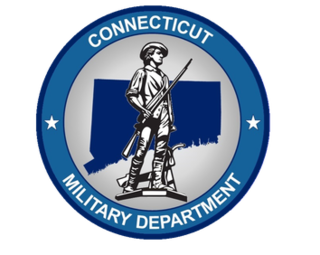
The Connecticut Military Department is a state agency of the government of Connecticut. Its primary components are the Connecticut Army National Guard, the Connecticut Air National Guard, and four companies of the state militia. The Military Department of the State of Connecticut traces its origins to May 11, 1637, when the "General Courts" established a military arm of the provincial government. In 1939, the State's Military Department was established to consolidate the offices of Adjutant General, Quartermaster General, Armory Board, and Armory Board Inspector.
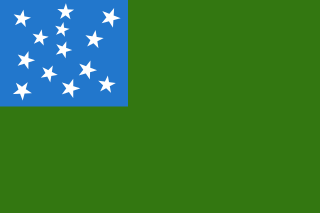
The Vermont National Guard is composed of the Vermont Army National Guard and the Vermont Air National Guard. Together, they are collectively known as the Green Mountain Boys. Both units use the original Revolutionary War-era Flag of the Green Mountain Boys as their banner. In 2009, they had 2,600 members.

The 5th New York Infantry Regiment, also known as Duryée's Zouaves, was a volunteer infantry regiment that served in the U.S. Army during the American Civil War. Modeled, like other Union and Confederate infantry regiments, on the French Zouaves of Crimean War fame, its tactics and uniforms were different from those of the standard infantry.
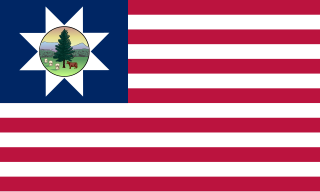
The 1st Vermont Infantry Regiment was a three months' infantry regiment in the Union Army during the American Civil War. It served in the eastern theater, in and around Fortress Monroe, Virginia.

Peter Thacher Washburn was a Vermont lawyer, politician and soldier. A veteran of the American Civil War, he served as the 31st governor of Vermont as a Republican from 1869 to 1870, and was the first Vermont Governor to die in office.
The 3rd Wisconsin Infantry Regiment was an infantry regiment that served in the Union Army during the American Civil War.

George Haven, born in New London, Connecticut, on March 27, 1844, was the thirtieth Adjutant General of the State of Connecticut. He was the son of Urbane and Sarah (Rogers) Haven. Both were members of old Connecticut families. Haven acquired his education early in public schools of New Haven. He loved books, but with the rumors of war he joined the National Guard at the age of 17. After being discharged on November 19, 1864, Haven returned home to New London and worked for the Wilson Manufacturing Company, with which he was connected for 18 years. He left the employ of the Wilson Company at around 1886, and the next year went to work for the Quinnipiac Company. In 1888 he was appointed Chief of police of New London. Haven served at the City of New London for six years as Alderman and Councilman.
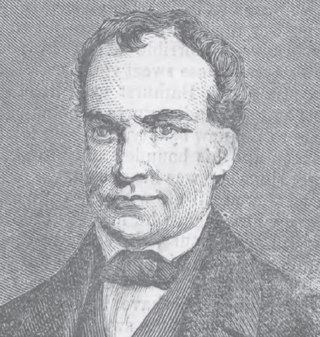
Gardner Stow was an American lawyer and politician who served as New York State Attorney General.

The New England state of Connecticut played an important role in the American Civil War, providing arms, equipment, technology, funds, supplies, and soldiers for the Union Army and the Union Navy. Several Connecticut politicians played significant roles in the Federal government and helped shape its policies during the war and the Reconstruction.
New Hampshire in the American Civil War was a small state remote from the battlefield that contributed soldiers, money, and supplies to the Union Army. It sent 31,657 enlisted men and 836 officers, of whom about 20% were killed in action or died from disease or accident.

Robert Ogden Tyler was an American military officer in the Union Army during the American Civil War. He graduated from the United States Military Academy in 1853 and fought in the Yakima War and the Utah War. He commanded the Artillery Reserve in the Army of the Potomac at the Battle of Gettysburg in July 1863, where his artillery batteries played an important role in the Union victory. Tyler also led a division of heavy artillery turned infantry during the Overland Campaign in 1864. He was severely wounded at the Battle of Cold Harbor and served in administrative duties for the remainder of the war.
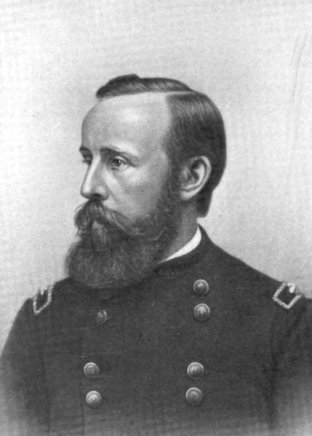
Edward Harland was a Union general during the American Civil War. He was associated with early battles of the IX Corps as well as Union involvement in North Carolina and the Tidewater region of Virginia.

Lyman Walter Vere Kennon was a career United States military officer in active service from 1881 to 1918, attaining the rank of brigadier general. During the Spanish–American War Kennon was in command of Company "E" 6th Infantry Regiment and was cited for bravery at San Juan Hill. He was most recognized for his 1903–1905 work with the Corps of Engineers to lead the building of the Benguet Road, a mountain highway in the Philippines linking Rosario, La Union and the lowland areas to Baguio. During World War I, he commanded the military training facility at Camp Greene, North Carolina; the 171st Infantry, Brigade, Camp Grant, Illinois, and then the 86th Division, Camp Grant, Illinois.
The Adjutant General of Maryland is the head military official of the Maryland National Guard, the Maryland Defense Force, and any other military or paramilitary units that may be maintained by the State of Maryland. The adjutant general is responsible for the military department's budget and maintains all State-owned armories in Maryland.
The 4th Connecticut Infantry Regiment was an infantry regiment that served in the Union Army during the American Civil War.

Edward Elias Bradley was the twenty eighth Adjutant General of the State of Connecticut. Bradley served as president of the Boston Buckboard and Carriage Company. He also headed the News Publishing Company. Bradley during 1901 to 1903 was the president of the New Haven Chamber of Commerce. He was commissioner of the public parks of New Haven from 1888 to 1901, and in 1910 became the president of the parks commission. Bradley was president of the Governor’s staff Association of Connecticut from 1903 to 1911. Bradley was president of the Defender Monument Association, which raised funds for the defenders monument to commemorate the successful defense of the West River. He was also the president of the Young’s Men Institute. In 1883, Bradley represented the town of Orange, Connecticut in the general assembly. Bradley was a Democrat and introduced and advocated the constitutional amendment for biennial sessions of the Legislature, which was accepted. He was the director of New Haven National Bank and was the director of Quinnipiac Fire Insurance.
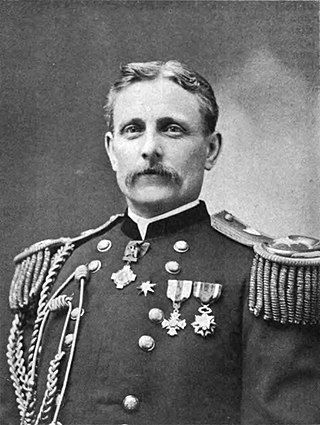
George Malpas Cole, was the thirty-second Adjutant General of the State of Connecticut. He was the son of George Cole and Jane A. Malpas. Born in Portsmouth, England, his family moved to Massachusetts where his father was a civil engineer. Cole was educated in public and private schools. Cole was also tutored by his father, where he became an assistant to his father. Cole would later become associated with a wholesale and a grain business in New London.

Major General Francis J. Evon Jr. is the Adjutant General of the Connecticut National Guard. He is responsible to the Governor and the Chief, National Guard Bureau, for providing operationally trained, equipped and mission-ready forces to support both U.S. mobilization requirements and state emergency operations to include developing and coordinating counter terrorism and domestic preparedness contingencies for the State of Connecticut. He implements policies, programs, and plans as the direct link to all state assigned National Guard resources, providing information and evaluation, issue resolution and action recommendations. General Evon began his military career in 1985 as an enlisted Anti-Tank Crewman in the Combat Support Company, 2nd Battalion, 102nd Infantry of the Connecticut Army National Guard. He was commissioned through the Army Reserve Officers’ Training Corps in 1989. Major General Evon has held command leadership positions at the company, battalion, and brigade levels. He served as commander of the 1st Battalion, 102d Infantry Regiment in Afghanistan during Operation Enduring Freedom from November 2009 to November 2010. Prior to his current assignment, General Evon served as the assistant adjutant general for the Connecticut Army National Guard. His promotion to major general was confirmed at the federal level by the U.S. Senate on May 23, 2019.

Alexander Warner was an American Union Army officer, banker, planter, and Republican politician. He was the 15th Secretary of State of Mississippi, the 44th State Treasurer of Connecticut, and a member of the Kansas House of Representatives.















